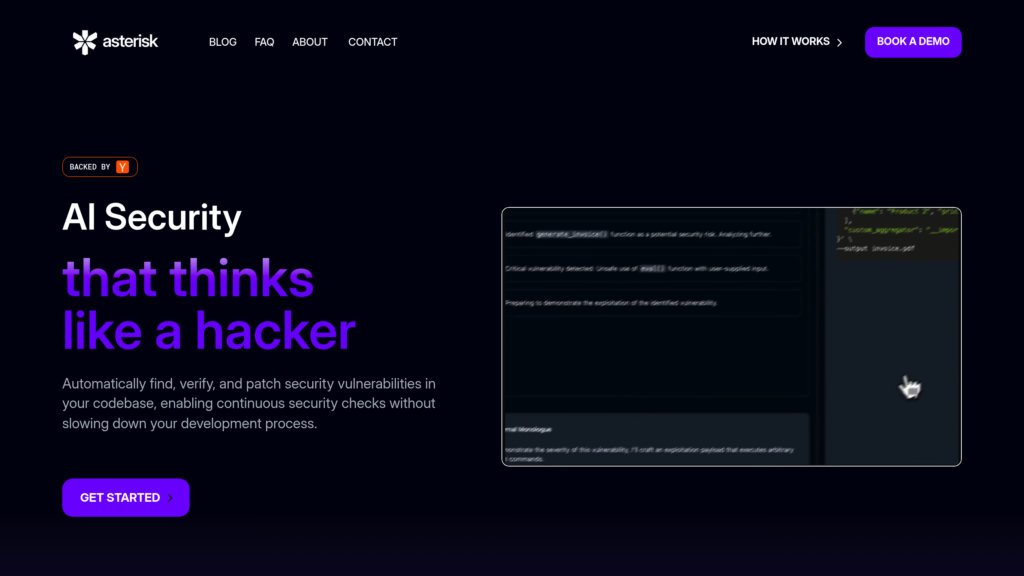Asterisk
Automated security platform detects and fixes code vulnerabilities with minimal false alarms
Introduction
What is Asterisk?
Asterisk is a sophisticated AI-driven security agent that conducts in-depth automated code audits, identifying both technical weaknesses and business logic flaws. By leveraging context-aware inspection, dynamic threat modeling, and practical exploit validation, it pinpoints genuine security threats and creates proof-of-concept attacks, delivering remarkable accuracy with almost no false positives. The system offers ongoing surveillance of common vulnerabilities (CVEs) and supply chain risks, enabling businesses to fortify their applications swiftly and dependably without manual effort.
Key Features:
• Context-Sensitive Vulnerability Detection: Applies semantic analysis and specification creation to uncover intricate business logic issues and technical security gaps in code.
• Dynamic Threat Modeling: Constantly refreshes with the newest CVEs and emerging vulnerabilities to spot evolving dangers specific to your applications.
• Automated Exploit Confirmation: Runs simulated attacks in isolated settings to validate vulnerabilities and generate practical proof-of-concept exploits.
• Intelligent Patch Creation: Produces fixes automatically to resolve identified vulnerabilities, simplifying the correction workflow.
• Supply Chain Risk Tracking: Monitors weaknesses in external dependencies to avert secondary security breaches.
• Rapid, Scalable Analysis: Uses efficient inference routing to perform comprehensive security checks in hours, ideal for agile development environments.
Use Cases:
• Automated Security Audits: Organizations can streamline vulnerability detection and verification across their code repositories to uphold strong security standards.
• Business Logic Flaw Identification: Uncovers subtle logical errors that may cause financial or data leaks, often overlooked by conventional scanners.
• Ongoing Vulnerability Surveillance: Remain shielded against newly found threats with live updates and supply chain evaluations.
• Proof-of-Concept Attack Development: Security units obtain confirmed exploit examples to enhance comprehension and prioritize fixes.
• Automated Patching: Speed up vulnerability resolution by auto-generating and implementing security patches.
